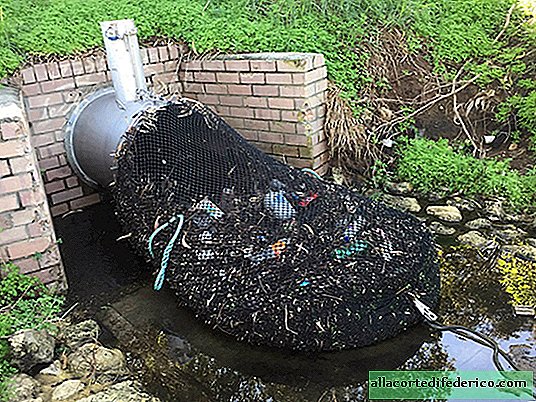How one Turkish dam created a huge problem for Iraq
Rivers flowing simultaneously along the territory of two or even three states often become the subject of controversy and disagreement of neighbors. In the modern world, when the problem of lack of fresh water is becoming more acute, many countries are ready to spend tremendous amounts of money to leave on their territory those precious cubic meters of water that the river carries downstream to the territory of a neighboring state. The construction of dams and the construction of reservoirs - this is the legal way that allows you to solve your problems with water supply, but, unfortunately, leads to conflicts with neighbors.
 Location of the Ilisu Dam
Location of the Ilisu DamThe source and upper course of the Tigris River are located in Turkey. Here, in the mountains of the Eastern Taurus Mountains, in a lake called Khazar-Gol, the greatest river of the Middle East originates, which for thousands of years has provided the existence of many civilizations of this semi-desert region. The length of the Turkish and border parts of the river is about 455 kilometers, while the remaining 1,415 kilometers flow already through Iraq. Due to the rapidly growing population and increasing demand for electricity, Iraq and Turkey have embarked on large-scale transformations of the riverbed, constructing dams and reservoirs. Moreover, Turkey is in a more favorable geostrategic position, having the ability to dispose of the upper reaches of the river at its discretion. At present, there are already 2 dams in Turkey with operating hydroelectric power stations and several more under construction, including Ilisu hydroelectric power station, the full completion of which is planned for 2022.
 Dam Ilisu
Dam IlisuThe dam under construction has a stone-slab structure reinforced with a reinforced concrete shield. The height of the dam is 135 meters, and the length exceeds 1.8 kilometers. At the future hydroelectric station they plan to install 6 hydro turbines with a capacity of 200 MW. The total capacity of all turbines of the future Ilisu hydroelectric power station will be 1200 MW, which is much higher than the capacity of the other two hydroelectric power stations built by Turkey on the Tigris.
But this dam causes concern not only among the leaders of Iraq, but also among historians, environmentalists and many public figures, both within Turkey itself and beyond. The fact is that after the construction of the dam on the river there will be the largest reservoir, whose area will be more than 300 square meters. km Despite the fact that the southeast of the country is considered one of the most sparsely populated, about 200 settlements fall into the flood zone, including one of the oldest cities on the planet - Hasankeyf.
 Hasankeyf City, Turkey
Hasankeyf City, TurkeyThe history of Hasankeyf has more than one millennium. The first large settlement appeared here during the time of the ancient Romans, who built the Kefe fortress on the Tigris river. The city repeatedly passed into the possession of various states, was built and rebuilt until in the 16th century it became part of the Ottoman Empire. Strong earthquakes that repeatedly shook Hasankeyf throughout its history destroyed most of the ancient buildings of the city, but still, there is something to see. While there.
 The historic city of Hasankeyf
The historic city of HasankeyfModern Hasankeyf is a provincial town with a population of several thousand people, which is inhabited mainly by Kurds. Most of the city will soon go under water, and its inhabitants are subject to relocation.
Despite the fact that the construction of the hydroelectric station has not yet been completed, the filling of the reservoir began in the summer of 2018. This was preceded by several stages of tense negotiations between Turkey and Iraq, which proposed a gradual filling so that the Tiger would not lose all its flow. Nevertheless, Iraqi experts recorded a decrease in river flow, after Turkey began to fill the reservoir. Instead of the usual for this time of year indicator of 700 cubic meters of water per second, a figure of 390 cubic meters per second was noted. The water level in the Tigris in northern Iraq has fallen markedly, many sections of the bottom have been exposed, which has never been observed before.
 Map of Iraq
Map of Iraq

















